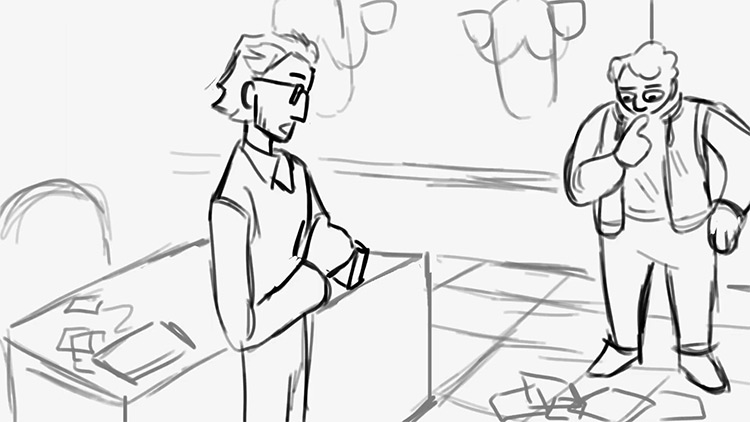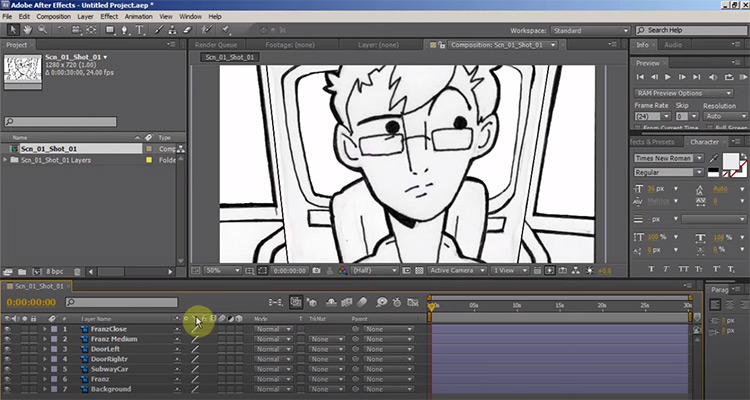What is an Animatic in Animation?
An animatic is a series of storyboard images that have been timed into a pre-visualization video to preview an animated film, show, or video game.
Animatics vary greatly in detail according to the length of animation and budget.
Some are static storyboard frames showing just the timing of shots. Other types of animatics include more detailed camera pans and even some basic animation effects.
Most also include a first draft of the audio soundtrack and/or voice acting.
The job of an animatic artist is to estimate the time needed for each shot — and in some cases the in-between movements.
Studios & animators use an animatic to make sure animations flow well, and to make sure they can easily be adjusted before it is animated properly. This saves a lot of time and budget.
Why Do You Need An Animatic?
When making an animation short, TV show, or movie, you break down the work shot by shot (or by every camera angle).
This is the job of the storyboard artist as they map each shot visually.
And sometimes on short jobs, it’s possible to get away with just a storyboard!
When your animation is longer than a minute or so, previsualization and timing become very important. This is where designing an animatic can make a big difference.
From a practical standpoint, you need to know how long a shot will be on screen so you can plan things like:
- The amount of work and how long it will take to animate
- How many artists you will need
- What your budget is and if you’re sticking to it
- How to delegate shots to artists so they don’t get overwhelmed
- Is your animation meeting any length constraints (ie. is it being timed properly?)
An animatic is even more important if you want to craft an excellent story that flows naturally.
Before any animation begins, you can see where there may be some awkward pauses. Or you can quickly identify when a scene feels too rushed.
Animatics allow the editor and director to get a sense of the animation and make cuts where needed.
In a nutshell, an animatic saves everyone’s time and energy in the long run.

Animatic vs. Storyboard: What’s The Difference?
The storyboard is a series of still images that tell the story including the dialogue written underneath each board panel.
An animatic is a series of storyboard frames that have been timed to provide a very basic “video” of the finished animation.
You won’t be able to create an animatic without creating a storyboard first.
Do Animatics Contain Any Actual Animation?
They can.
Sometimes the artist will feel like a complicated action needs to be timed out so the animator will know what needs to happen, and when.
It depends on the preference of the artist and the complexity of the work.
For example, check out this animatic for the song Feel Good by Gorillaz.
It has no extra animation beyond the camera movement.
Now look at this animatic for Into The Unknown from Frozen II. It’s got way more detail in the movement and animation.
The level of detail comes down to complexity and budget.

Which Software Is Used For Making Animatics?
It all has to start with a storyboard.
If you draw your storyboard out on paper, you’ll need to scan each image in. Or you can save your storyboard frames from any digital drawing software like Photoshop.
Then you can use software like Boords to time them and stitch it all together.
Other software options include Adobe Premiere Pro, Adobe After Effects, or any other detailed video editing program.












